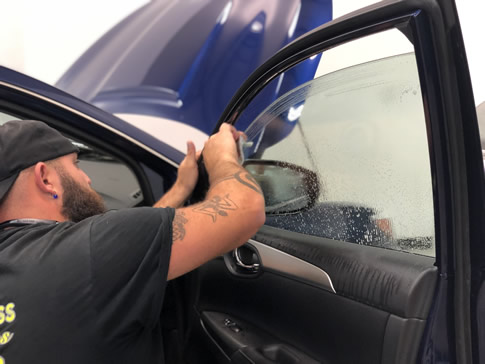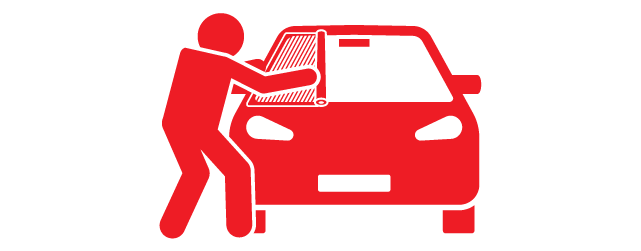Crucial Aspects to Consider When Choosing Window Color for Your Car
Selecting the right home window tint for your lorry includes a mindful evaluation of several essential aspects that can significantly affect both validity and functionality. The selection of window tints differs extensively, incorporating alternatives that offer varying degrees of UV defense and warm rejection, each with unique benefits.
Lawful Regulations and Restrictions

For example, some states allow darker colors for rear home windows while enforcing more stringent limitations on front windows. Furthermore, regulations might determine specific colors or products that can be utilized, prohibiting reflective or metal colors in particular instances.
It is necessary to think about not just the visual wishes but also the functionality and safety and security ramifications of home window tinting. Lawful constraints frequent area to guarantee exposure for both the driver and law enforcement. Prior to setup, vehicle proprietors should familiarize themselves with their neighborhood regulations, which can usually be found on state transportation websites or via local police. Following these regulations will assist make certain compliance and stay clear of potential legal difficulties.
Sorts Of Home Window Tint
Window color is available in numerous kinds, each designed to satisfy different requirements and preferences. The most common types include dyed, metalized, ceramic, and hybrid colors.
Colored window tint is prominent for its aesthetic appeal, providing an uniform look while lowering glare. It uses minimal warmth denial and might fade over time. Metalized color, on the other hand, integrates metal fragments that show warmth and UV rays, improving sturdiness and offering remarkable performance. This kind can disrupt electronic signals, which is a vital factor to consider for those who depend on general practitioner or cell function.
Ceramic window tint is a costs option, using outstanding heat being rejected and UV protection without compromising visibility. Its non-metallic building makes certain that it does not interfere with digital signals, making it an excellent option for modern automobiles. Crossbreed tints combine the advantages of colored and metalized films, offering an equilibrium of visual appeals and efficiency.
When selecting a window tint, it's essential to think about each kind's features and just how they straighten with your details requirements for personal privacy, warm rejection, and looks.
UV Protection and Warmth Being Rejected
A substantial variable to consider in home window color option is the degree of UV security and warmth denial it supplies. Ultraviolet (UV) rays from the sun can add to skin damage and speed up the fading of a lorry's interior. Therefore, selecting a window color that supplies high UV security is necessary for safeguarding both owners and the lorry's materials. Several high quality tints can obstruct as much as 99% of damaging UV rays, considerably decreasing potential wellness dangers.
Along with UV defense, warmth denial is another important element. Tints furnished with advanced technology can reflect and take in solar power, maintaining the automobile cooler and decreasing dependence on cooling. window tinting. This not only improves comfort but can likewise bring about boosted fuel effectiveness, particularly in hot environments
When reviewing various color choices, try to find those with a high Noticeable Light Transmission (VLT) percent while preserving efficient UV and infrared heat being rejected capacities. Products that satisfy these requirements typically suggest exceptional top quality and performance, ensuring that your vehicle stays a safe and comfortable environment. Inevitably, purchasing reputable home window color that succeeds in UV defense and warm being rejected will generate long-lasting benefits for both health and automobile upkeep.
Setup Approaches and Prices
Choosing the right window tint involves not only comprehending its safety functions but additionally considering the installment methods and associated costs. There are largely two setup approaches: professional setup and DIY application. Professional installation usually ensures a top notch surface, as skilled specialists guarantee that the tint is applied efficiently without flaws or bubbles. This degree of experience usually comes with a costs, with costs varying from $200 to $600 relying on the vehicle kind, the home window dimension, and the tint top quality.
On the various other hand, do it yourself sets are readily available at a reduced rate factor, usually between $50 and $150. They require a certain level of skill and persistence, as incorrect application can lead to unsuitable outcomes (window tinting). It's essential to comply with the maker's guidelines thoroughly and enable sufficient time for installment
In addition, consider the prospective costs of getting rid see of or changing poorly installed color, which can rise rapidly. Inevitably, picking one of the most appropriate setup approach rests on stabilizing budget plan restrictions with the need for top quality, toughness, and aesthetic appeal of the home window tint.
Maintenance and Durability
Appropriate upkeep is essential for making sure the durability of your vehicle's home window tint. Routine cleaning and care can dramatically influence the appearance and resilience of the tint - window tinting. It is advised to wait at the very least a week after installment before cleansing the windows to permit the glue to treat totally
When cleaning tinted home windows, utilize a soft microfiber fabric and a gentle, ammonia-free cleaner. Severe chemicals can weaken the color, causing peeling or discoloration. Prevent using rough products, as they can scratch the surface and compromise the tint's stability.

Inspect your window color on a regular basis for any kind of indications of damage, such as bubbling or staining. Early discovery enables for prompt repair services, protecting the color's capability and visual charm. By adhering to these upkeep techniques, you can boost the long life and aesthetic top quality of your vehicle's window tint, ensuring it remains a useful and attractive feature for go right here several years to come.
Conclusion
In conclusion, selecting the proper window color for a vehicle necessitates cautious factor to consider of various elements, consisting of legal guidelines, kinds of tint offered, and the dual advantages of UV protection and heat denial. Regular upkeep is necessary to guarantee the long life of the tint.
Picking a window color that uses high UV security is crucial for safeguarding both passengers and the lorry's products. Ultimately, spending in respectable window color that succeeds in UV security and heat rejection will certainly generate long-term advantages for both health and automobile maintenance.
Proper upkeep is important for guaranteeing the longevity of your vehicle's home window color. By sticking to these maintenance practices, you can boost the long life and aesthetic high quality of your vehicle's home window tint, ensuring it stays a useful and appealing attribute for years go to this website to come.
In final thought, selecting the proper window tint for a car necessitates careful factor to consider of various aspects, including lawful laws, types of color readily available, and the twin benefits of UV protection and warm denial.